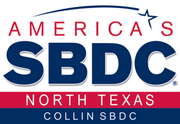David H. McConnell started his business in 1886, selling books door-to-door. He quickly realized a lot of the people he was trying to sell to were women, so he began to lure in female customers by offering little gifts of perfume. Before long, the perfume McConnell was giving away had become more popular than the books he was selling. He shifted focus (pivoted his idea) and founded the California Perfume Company, which later became Avon, known today as The Avon Company.
What does it mean to pivot ideas?
Pivoting ideas can be a matter of being open and flexible when it comes to change or demand. It can also be part of your Plan B Business Plan (which we discussed in our last blog.)
The year 2020 and the national pandemic changed the way many businesses were being conducted and brought a lot of excellent examples of businesses who pivoted ideas. These businesses were able to adapt, or pivot, and immediately implemented plans to keep their businesses profitable.
If you’ve ever driven a car, one of the first skills you learn, is how to make a U-turn. If you are one of those people who enjoy making U-turns, you probably found the required changes during the pandemic manageable and challenging, just by figuring out new ways to do business. For most individuals however, instant change or adaptation can be more of a struggle. To make a transition or “U-turn” in the way you normally handle business, it’s good to have a list of pivot-ideas you can be ready to make, if needed.
What are examples of pivoting ideas in business?
COVID 19 and our own national shut-down, gave us the opportunity to witness some great examples of businesses who pivoted ideas. For instance:
- Liquor manufacturers began making and selling hand sanitizer.
- Promotional companies began making and selling PPE, like face masks and face shields.
- Restaurants without a take-out or curbside pick-up option, adapted to make those things available.
- Grocery stores offered to shop and deliver, or load into your car.
- Tech companies moved their people out of the office and into their home.
- Restaurants offered grocery packages of the raw products they weren’t selling any longer.
- Streaming services began to offer movies for a fee that would not make it to theatres.
How do I plan to pivot?
We talked briefly in our last blog about planning to pivot. So what should be in your Plan B – U-turn or pivot file? How can you pivot your ideas (and business) to adapt to a drastic change in the way you do business? Here are some brainstorming ideas:
- Decide what is “doable”. If you make widgets, can you switch to making doodads instead?
- What service could you add, or offer?
- Is your website and social media up to date?
- How can you advertise your company’s “Plan B Pivot”?
- What do you need to have “ready” to pivot your idea into profit?
- Who around you is making it work? Look at similar businesses in the United States and ask questions about how they made it through the pandemic.
Be Open to a Complete U-turn/Pivot:
If you realize, like David McConnell, that your original business idea worked better with a different offering, pivot! Be willing to change your original plan to make your business succeed. Take a good look at what works best for your business. Are you selling more of a product or service that wasn’t in your original “offering?” What are your customers asking for and can you offer that item or service? Listen and adapt, be open to that new challenge that will make your business better and stronger.
For additional resources or ideas on how your small business can pivot or create a pivot plan, or if you would like help with other business strategies, please contact us at the Small Business Development Center – SBDC – serving Collin and Rockwall Counties, Texas.
Blog post by: Marta Gómez-Frey



